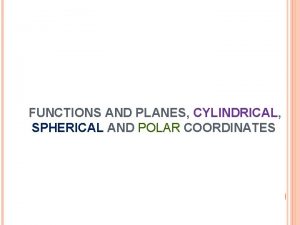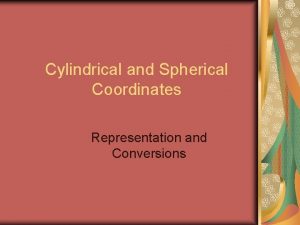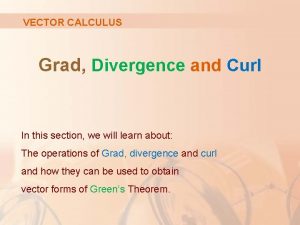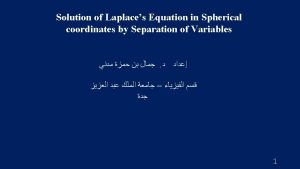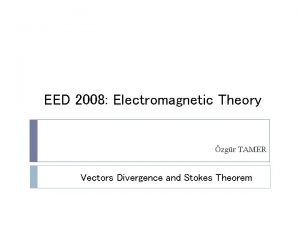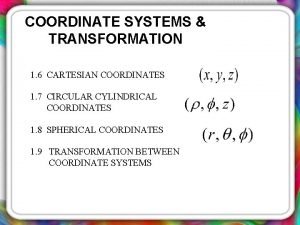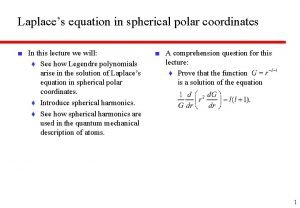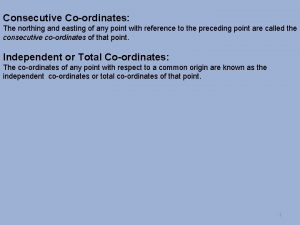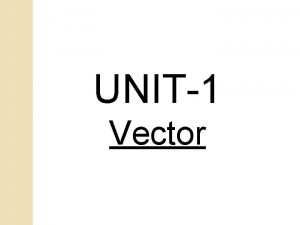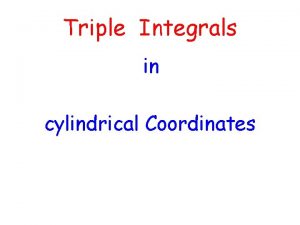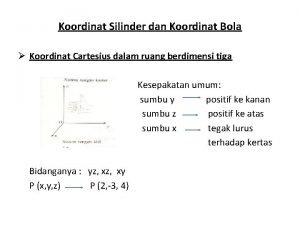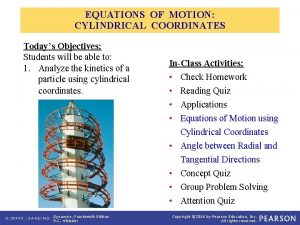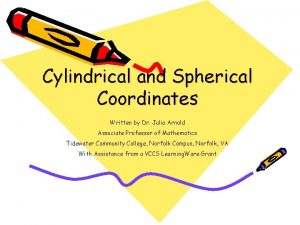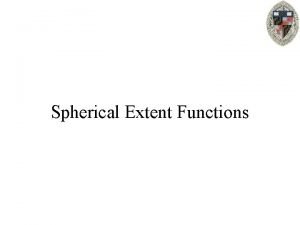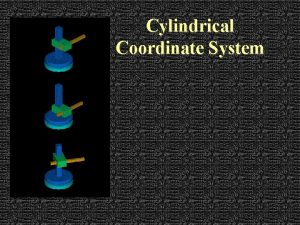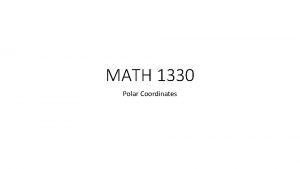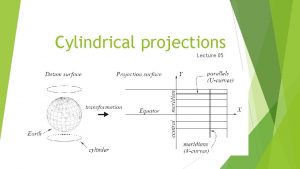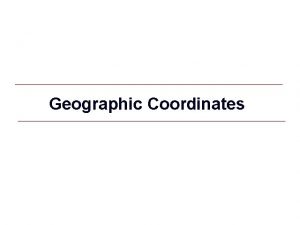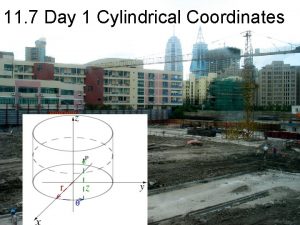Specifying points in spherical and cylindrical coordinates system
















- Slides: 16

Specifying points in spherical and cylindrical coordinates system. Spherical and cylindrical representation of vectors

Specifying points in spherical coordinates To specify points in space using spherical coordinates, we first choose two convenient, mutually perpendicular reference directions (i and k in the picture). When we specify position on the Earth’s surface for example, we might choose k to point from the center of the earth towards the North Pole, and choose i to point from the center of the earth towards the intersection of the equator (which has zero degrees latitude) and the Greenwich Meridian (which has zero degrees longitude, by definition).

Then, each point P in space is identified by three Numbers, the picture above. These are not components of a vector. shown in

In words: R is the distance of P from the origin is the angle between the k direction and OP is the angle between the i direction and the projection of OP onto a plane through O normal to k

To attach a familiar physical significance to these variables R is the distance of a point from the center of the earth is (90 degrees- the latitude of a point) for points North of the equator, or (90 degrees+ latitude) for points South of the equator is the longitude of a point for Easterly longitudes, or (360 degrees-longitude) for Westerly longitudes. By convention, we choose , and ,

Locating points in cylindrical coordinates To specify the location of a point in cylindrical coordinates, we choose an origin at some point on the axis of the cylinder, select k to be parallel to the axis of the cylinder, and choose a convenient direction for the basis vector i, as shown in the picture. We then use three numbers to locate a point inside the cylinder, as shown in the picture.

In words r is the radial distance of P from the axis of the cylinder is the angle between the i direction and the projection of OP onto the i, j planez is the length of the projection of OP on the axis of the cylinder. By convention r>0 and

Spherical representation of vectors When we work with vectors in spherical coordinates, we abandon the {i, j, k} basis. Instead, we specify vectors as components in the basis shown in the figure below

The basis is different for each point P. In words points along OP is tangent to a line of constant longitude through P is tangent to a line of constant latitude through P.

For our example of specifying points on the Earth’s surface, you can visualize the basis vectors like this. Suppose you stand at a point P on the Earths surface. Relative to you, points vertically upwards points due South points due East. Notice that the basis vectors depend on where you are standing,

We can also visualize the directions as follows. To see the direction of and fixed, and increase R. P is moving parallel to , keep R and fixed, and increase . To see the direction of. P now moves parallel to , keep R and , keep . To see the direction of . P now moves parallel to fixed, and increase Mathematically, this concept can be expressed as follows. Let r be the position vector of P.

A basis with these properties is called the `natural basis’ for the coordinate system. For a spherical coordinate system, the natural basis happens to be an orthonormal basis (basis vectors are mutually perpendicular and form a right handed triad)

Cylindrical representation of vectors When using cylindrical coordinates, all vectors are expressed as components in the basis shown. In words is a unit vector normal to the cylinder at P

is a unit vector circumferential to the cylinder at P, chosen to make a right handed triad is parallel to the k vector. You will see that the position vector of point P would be expressed as

Note also that the basis vectors are intentionally chosen to satisfy and are therefore the natural basis for the coordinate system.

Thanks for watching
 Relation between spherical and cartesian coordinates
Relation between spherical and cartesian coordinates Cylindrical spherical coordinates
Cylindrical spherical coordinates Curl formula in spherical coordinates
Curl formula in spherical coordinates Laplacian in cylindrical coordinates
Laplacian in cylindrical coordinates Differential form of amperes law
Differential form of amperes law Curl of a vector in cylindrical coordinates
Curl of a vector in cylindrical coordinates Area in spherical coordinates
Area in spherical coordinates Laplace equation in spherical polar coordinates
Laplace equation in spherical polar coordinates Fourier transform spherical coordinates
Fourier transform spherical coordinates Consecutive coordinate
Consecutive coordinate Dl cylindrical coordinates
Dl cylindrical coordinates Triple integrals
Triple integrals Koordinat bola
Koordinat bola Polar coordinates dynamics examples
Polar coordinates dynamics examples Cho hang
Cho hang Polar derivative
Polar derivative Specifying the purpose of research
Specifying the purpose of research
